Watermelon Bush Jubilee
$4.49
Citrullus Lanatus
- Seed Count 10
- Compact Bush Style
- Annual
In stock
Description
Watermelon Bush Jubilee is a space saving, bush-type plant with a spread of 1-2 meters instead of producing vines that can take over a whole garden.
The fruits are rather more elongated than most watermelons and weigh in at a respectable 4 to 5 kilograms. Possessing crisp, juicy red flesh with a very high sugar content you are sure to enjoy the succulent fruits of your labour.
It has some resistance to anthracnose and fusarium wilt. Watermelons are warm-season annual that needs a long warm season to mature.
Fruit is ripe when the stem starts to brown off and you can save the seeds from the ripe fruit as you eat.
This is an outstanding choice for gardeners who have limited space but who refuse to forego one of the summer’s most sublime delicacies.
| Method: Sow direct | Soil Temp: 21°C - 35°C |
| Cool Mountain: Sep - Dec | Position: Full sun |
| Arid: Sep - Mar | Row Spacing: 75 cm |
| Temperate: Aug - Dec | Planting Depth: 10 mm |
| Sub Tropical: Aug - Jan | Harvest: 80 Days |
| Tropical: Apr - Jul | Plant Height: 20 cm |
Climate and Seasonal Timing
- Temperature Requirements: Watermelons require temperatures above 20°C for germination and optimal growth. Ideal growing temperatures range between 21°C and 35°C.
- Planting Seasons: See climate guides on product description.
- Frost Sensitivity: Ensure all threat of frost has passed before planting. Use protective covers if unexpected cold snaps occur.
Site Selection and Soil Preparation
- Sunlight: Choose a site with full sun exposure. Watermelons require at least 8-10 hours of sunlight daily.
- Soil Type: Prefer sandy loam that is rich in organic matter. Heavy clay soils can be amended with compost or sand to improve drainage.
- Soil pH: Maintain a soil pH between 6.0 and 7.5. Conduct soil tests and amend soil with lime if the pH is too low.
Planting Techniques
- Direct Seeding vs. Transplanting: Direct seed watermelons in the ground or start indoors and transplant. Transplanting can give plants an early start.
- Spacing: Space mounds about 75 cm apart.
- Isolation from Wind and Weeds: Use windbreaks or plant near natural barriers. Employ mulch to suppress weeds.
Watering and Irrigation
- Initial Watering: Keep soil consistently moist but not waterlogged, especially during germination and initial growth.
- Drip Irrigation: Use drip irrigation to deliver consistent moisture and minimize fungal diseases associated with overhead watering.
- Reduced Watering at Fruit Maturation: Gradually decrease watering as fruits start to mature to concentrate sugars and improve sweetness.
Fertilisation and Nutrient Management
- Initial Fertilisation: At planting, use a balanced slow-release fertiliser with emphasis on potassium for fruit development.
- Supplemental Feeding: Apply a side dressing of compost or additional fertiliser throughout the growing season, focusing on nitrogen during vine growth, and phosphorus and potassium when fruits start to develop.
Pest and Disease Control
- Common Pests: Monitor for aphids, cucumber beetles, and cutworms. Utilize organic pesticides or companion plants for natural deterrents.
- Diseases: Practice crop rotation to reduce fungal diseases like powdery mildew. Use resistant varieties when available. Ensure proper airflow and sunlight penetration by pruning leaves if necessary.
Companion Planting
- Beneficial Companions:
- Marigolds: Deter nematodes with their strong scent.
- Radishes: Protect against cucumber beetles and enhance soil health.
- Corn: Acts as a natural windbreak and provides shade for younger plants.
Avoid Planting With:
- Potatoes: They compete for nutrients and attract similar pests.
- Other Cucurbits: Avoid planting near cucumbers and zucchinis to prevent cross-attraction of pests and diseases.
Harvesting
- Timeframe: Typically, watermelons are ready to harvest about 80 days after planting, depending on the variety.
- Indicators of Ripeness: The watermelon should have a hollow sound when tapped, the underside will turn a creamy yellow, and the tendril near the fruit stem will dry out.
Postage Charge
Orders under $30 attract a $4.50 shipping charge. Orders $30 and above have free shipping.
Order Times
Seed orders are normally dispatched within three business days. You will receive an email when seeds are mailed out.
Postage Days
Seeds are mailed out Monday to Friday at 1pm. Except for the Friday of long weekends.
Postage Times
WA 2-3 Days: SA,NT 3-5 Days: NSW, ACT, QLD, VIC: 5-7 Days
Carrier
We use Australia Post Letter Postage for the majority of orders
Not only are our seeds packed in recycled paper envelopes, we keep the theme going when we post out website orders. To protect your seeds from moisture and the letter box munchers (snails), we use a very special plastic free material made from plants. They are then put into recycled mailing envelopes. Green all the way 💚🌿

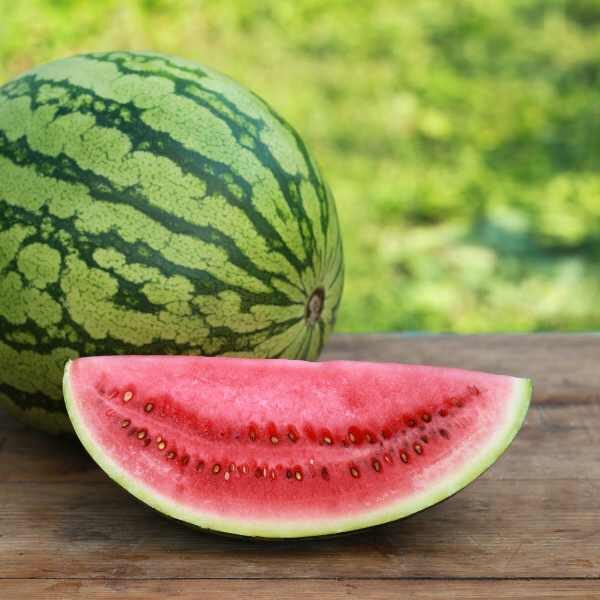



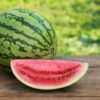
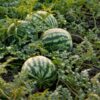

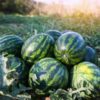


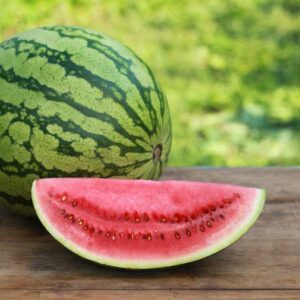
1 review for Watermelon Bush Jubilee